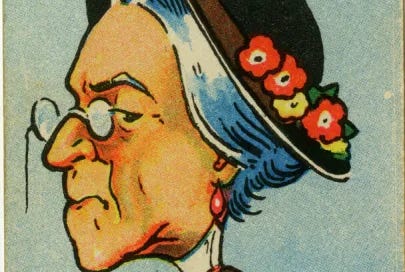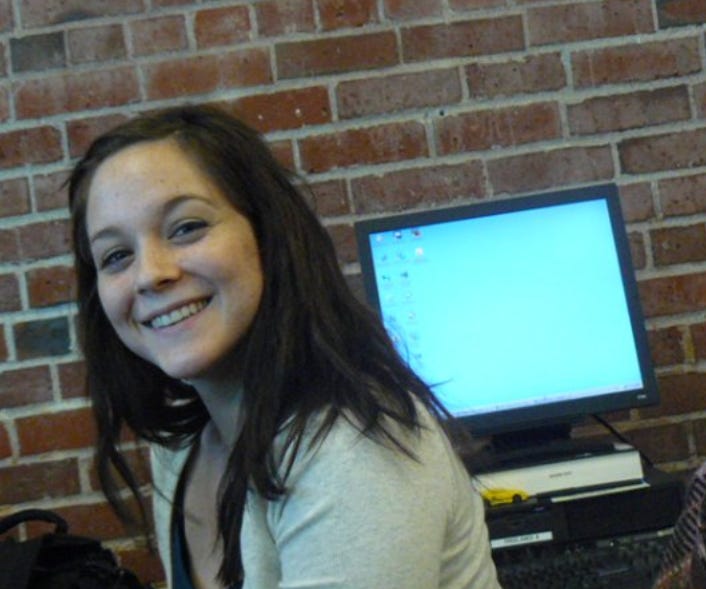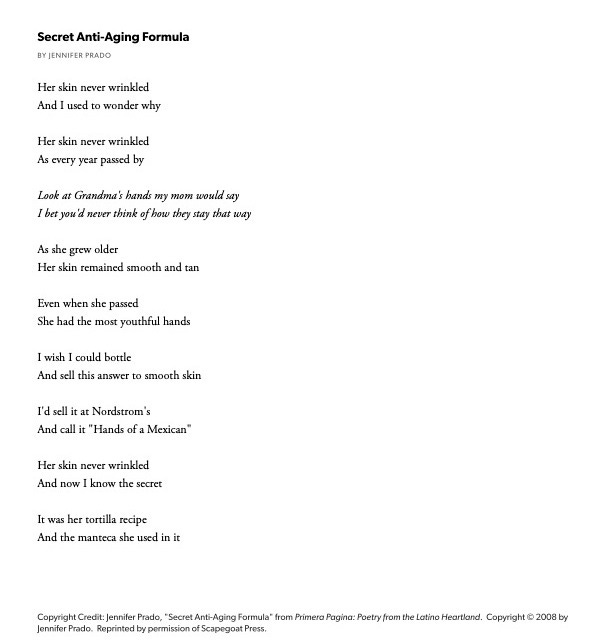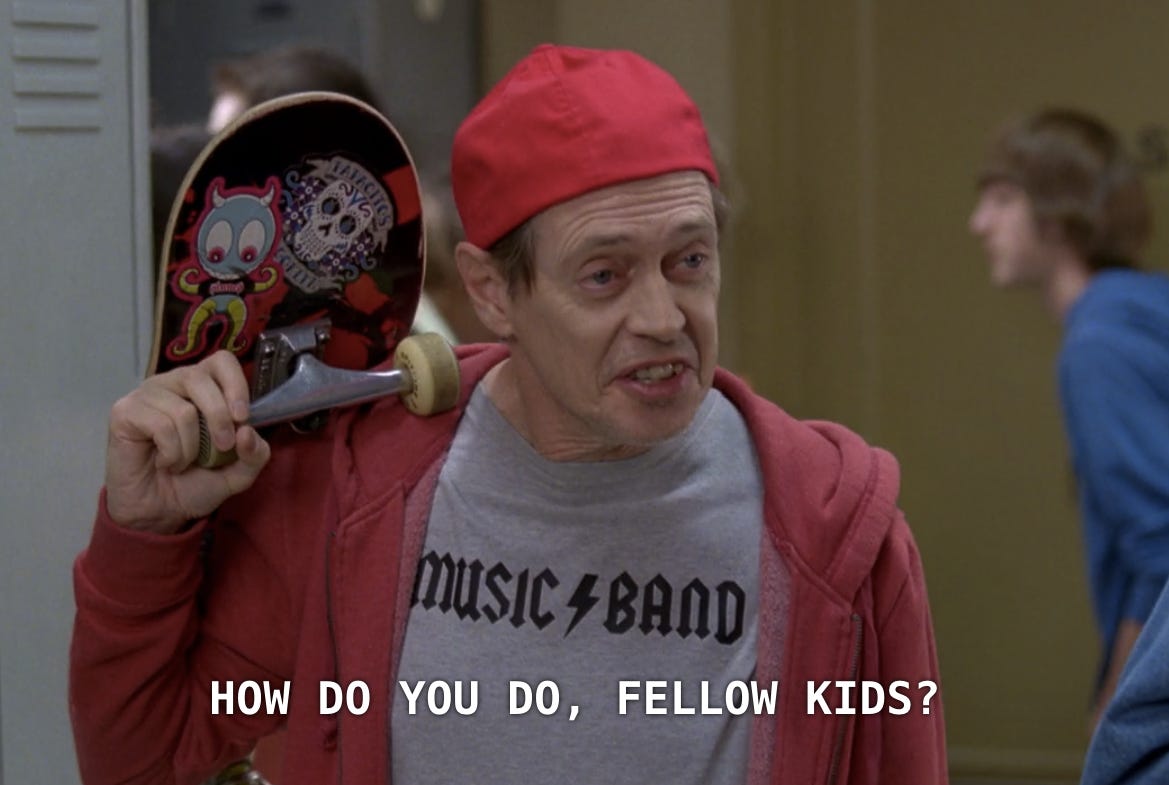I can’t pinpoint the first specific moment that it happened, but I know the general timeframe that it became my new daily reality. Somewhere — maybe during the pandemic, when we were all cloistered for so many months and emerged, squinting into the sun, looking like we’d all been gone to the Adirondacks seeking treatment for consumption — I went from “in my 20s” to “in my late 30s.” Or, more specifically, I went from “young woman” to “withered crone” with no stops in between.
Aging, I think, specifically for women, is not a local train. It’s an express bullet.
My recognition of the daily lurch toward middle age felt slow and measured. I’ve always relished my passing years; parentified by kindergarten, childhood felt a bit like a chore to be endured. I made a concerted effort to get through the steps toward adulthood quickly, working nearly nonstop beginning the moment when I could drive myself to work, graduating from college early, and branching out on my own as soon as I could.
The combination of being 4’11, female, and, usually, the youngest person in the room often put me on my back foot at work; after all that work to grow up, not much stokes my inner rage like being treated like a child. I built up a defensive posture and became even more determined to do everything I could, all the time, to perfection.
In my pursuit of becoming an adult, though, at some point, I also got older.
I first noticed it in communal spaces, like bars and grocery stores and parks, though again, I can’t exactly pinpoint an instance or time it happened. It just started to happen. One day I was a young woman who received all of the particular privileges and undesired attention that come with the currency of being closer to birth than to death and the next, I just…wasn’t.
Men stopped holding doors open for me, which is fine because I can do it myself.
I began to rarely, if ever, need to fend off unwanted conversation when out alone — a big departure, since I seem to have one of those faces that encourages strangers to trauma-dump within seconds of meeting.
And once, when I needed to ask a Gen Z man to help me reach something up high at the grocery store, I felt like I might as well have been wearing a costume of the lady on a box of Old Maid cards. As I waved him down, he looked more concerned than interested. When he realized I only needed his long arms, he softened, but still remained a bit cautious. What would have been a flirty interaction even five years before became a moment between a kindly young chap and a helpless old woman. He treated me more someone’s mom than someone who was probably the same age as his older sister.
We can’t control how people see us. But sometimes, the way other people see us becomes so out of balance with the way we see ourselves that it can be jarring.
In her 1993 book, The Fountain of Age, Betty Friedan explored the subject of women and the next phase of life following her massive critical breakthrough, The Feminine Mystique. In addition to exploring subjects like how women’s health has prolonged our lives, generally, and the ways that various milestones age us, she also wrote about the perception of aging, both internally and externally.
“I have discovered,” she wrote “that there is a crucial difference between society's image of old people and 'us' as we know and feel ourselves to be.”
I’m reminded of my great-grandfather, an ancient Mexican man who didn’t want to be moved from a trailer park into an actual retirement home because “it’s full of old people.” We tend to have a very specific view of what a senior citizen looks like, but somehow, it’s never us — even when the Easy Strider fits.
Like all privileges, the specific benefits of youth are harder to see when you’re experiencing them. But as they begin to ebb away and the world treats you differently — or simply stops treating you like much of anything at all — they are suddenly very stark.
The fact is that I no longer read as “young.” While I am genetically blessed with fairly firm skin (shout out to my mom and her side of the family) and the Secret Sauce of Millennials’ anti-aging practices, my style gives me away immediately. I can’t find a single pair of relaxed-fit jeans that don’t make me look like an overgrown toddler and I refuse to wear a bucket hat (THOSE DAYS ARE OVER).
And, as a result, I’ve noticed a distinct difference in my visibility in the world. The eyes of a customer service rep that sweep past me onto the Gen Z standing next to (or even behind) me. My young neighbors who rent a house and seem genuinely a little afraid of me, even though we’ve always been very cordial.
When I was younger, I thought that expressions like “youth is wasted on the young” or the ongoing pursuit of looking younger had more to do with generally being attractive to potential mates, or at least retaining a kind of pretty privilege. But the older I get, the more I realized that it’s not so much about how you look, but whether or not people see you at all.
And the thing that’s hard for most people to grapple with? There’s nothing to be done, really.
Most of us have only two choices: Look our age or look like we’re trying too hard.
Youth is highly visible. Regardless of who you are or where you may find yourself, when a group of [insert younger generation] kids walk by, you’re going to look. Youth is a spectacle of sorts. Age doesn’t make you less attractive — have you seen Steve Carell lately?? Also, two words: Walton. Goggins. — but it does make you less visible, especially if you’re a women.
This is why so many people are spending thousands of dollars to look like Jigsaw. Unfortunately, the pursuit of recaptured youth is also highly visible, which is why so many celebrities (like Demi Moore and Courtney Cox) are having their fillers dissolved.
It’s also why Pamela Anderson is creating such a splash these days: Because her visible aging stands out in a crowd of women ‘toxing their foreheads into a motionless wasteland. In Hollywood, aging naturally is what’s most shocking, visually.
And it’s why Katherine Hahn’s hypebeast character on The Studio has a wardrobe that looks like the Design District threw up on the TikTok shops of a handful of influencers. Her try-hard style is so VERY visible as to practically be an entire other character — but it underscores the way that less-than-youthful people can often chase youth and its currency and end up looking…ridiculous.
I think, also, about Carrie Coon’s insistence that she literally never gets recognized in public, in large part because, at 44 years old, she’s “just a lady in sweatpants” at the grocery store. Like, as a middle-ish-aged woman, all it takes in this world to be fully ignored — even if you were on White Lotus!!! — is to wear athleisure and put on a ballcap.
Plenty of other people have written and spoken about the idea of an “attention economy,” but I think for most of us, we just want to be youthful-coded enough to be treated the same way we were treated when we were our hottest, which is typically somewhere in our middle 20s. Or at least, that’s what it was for me! Unfortunately, that train has pulled out of the station and there’s no getting it back.
Which feels like one of the biggest challenges to get over with regard to aging. You do sort of have to grieve something that you didn’t realized you were enjoying — usually, once it’s already gone and you’ve already squandered it with all of your not-noticing.
I spent so much time worrying that I wasn’t attractive enough, thin enough, or stylish enough that I could not fully see myself in the moment, which is an abject waste of energy (and braincells, to be honest).
My god, when I think about how much time I spent when I was 28, 29, and 30 feeling like I wasn’t physically good enough. At the gym at 6:30a so that I could get to work and then manage everything else in my life, counting my macros, and figuring out skincare that would fend off any and all signs of early aging. And for what? I still got old and became invisible. Bad things still happen, which is another thing that ages you.
I have achieved a lot of my goals, sure, but it’s not a march of perpetual progress. There are setbacks with every years. But you’re older and you’re more capable of dealing with them.
With every subsequent loss, disappointment, failure, fright, intrusive thought, near-miss while barreling down the freeway in your metal death-pod, you age a little more. The lines on our faces, the sag in our cheeks, and wily, wiry white hairs on our hear — they’re all just signs of having been through some stuff.
Which is maybe what’s so attractive about youth to begin with. As young people who are proudly, boldly coming online to play Christopher Columbus to easily-Googlable things have shown us, it’s not their wits that are necessarily attractive. Instead, our culture puts a premium on the kind of ding-dong optimism that comes from having had a relatively easy go of it.
“[O]ne of the mixed blessings of being twenty and twenty-one and even twenty-three is the conviction that nothing like this, all evidence to the contrary notwithstanding, has ever happened before.”
💐 Joan Didion, Slouching Towards Bethlehem
Maybe we’re all so drawn toward young-passing people because we want proximity to a face that says “the hardest thing in my life is deciding which sorority to rush” and an on-trend sense of fashion that says “someone else pays my credit card bill.” It’s uncomplicated, at least.
Generally speaking, I continue to embrace the idea of getting older. Next week I’ll turn 38, which feels precarious close to 40, which seems both very old and not that old, considering that’s only around halfway where most of us can hope to get (assuming the entire planet isn’t a ball of lava by 2030). Which the luck and longevity of my family, I’ll still have another 40 years of descending into madness and misery left, except my back will hurt while I do it. What a terribly designed machine these bodies are.
But there’s something that’s just come knocking around at the edges of my brain and I don’t think it’s just the fact of knowing that I will probably never look cool again in my godforsaken life. No, instead it’s the idea that I rushed to get here — and now that I’m here, that I’m an adult, it’s also not that spectacular.
I think for many years, I was racing toward my middle-adult years in the hopes that I’d have achieved some nominal kind of success. Now that I’m hovering around it, I’m being forced to examine what I want next, how it will look — and how I’ll look as I pursuit it.
If we’re to live more than half our lives being read as old, I suppose it’s best to live within that reality. To be the nice older lady at the store who calls people “sweetie” and who helps out when they can. And to put on retinol every night and sunscreen every day to save what little of our youthful skin we have left. Because while we can’t control the passage of time or the perceptions of others, we can, to some degree, control the ways they show up on our face.







If it helps, which it won’t, 64 finds you 37s going on 38s amazing and beautiful and fashionable and wise. I loved you in your 20’s but you understand so much more now. EXCELLENT piece of writing here 💙 Thanks for making my Saturday morning reading more fun!